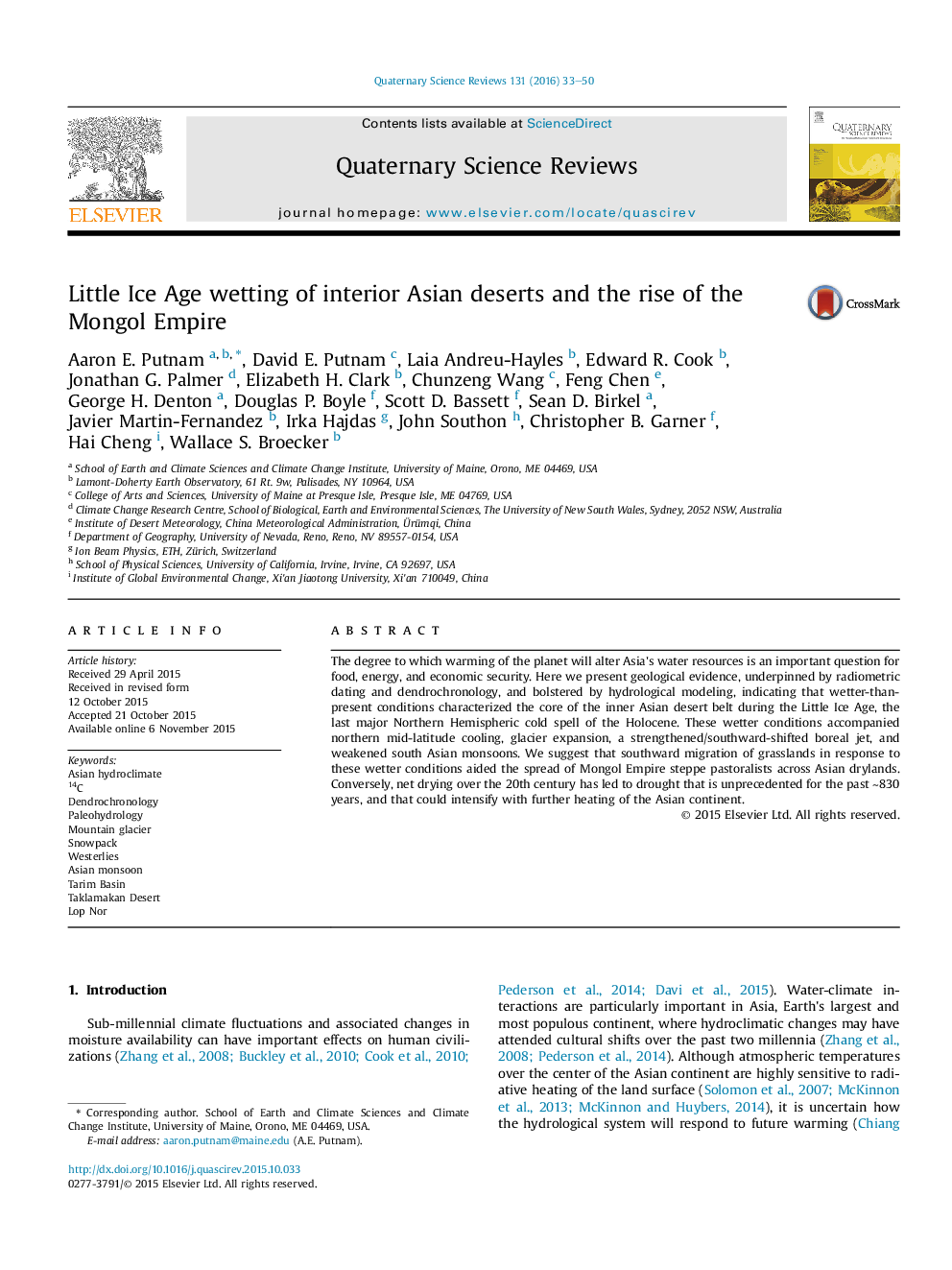| کد مقاله | کد نشریه | سال انتشار | مقاله انگلیسی | نسخه تمام متن |
|---|---|---|---|---|
| 4735751 | 1357977 | 2016 | 18 صفحه PDF | دانلود رایگان |
• The Tarim Basin was wetter than today for most of the past 830 yrs.
• Wet conditions correspond to Little Ice Age cooling.
• Southward migration of rangelands facilitated spread of Mongol Empire.
• Current warming could cause northward expansion of interior Asian deserts.
The degree to which warming of the planet will alter Asia's water resources is an important question for food, energy, and economic security. Here we present geological evidence, underpinned by radiometric dating and dendrochronology, and bolstered by hydrological modeling, indicating that wetter-than-present conditions characterized the core of the inner Asian desert belt during the Little Ice Age, the last major Northern Hemispheric cold spell of the Holocene. These wetter conditions accompanied northern mid-latitude cooling, glacier expansion, a strengthened/southward-shifted boreal jet, and weakened south Asian monsoons. We suggest that southward migration of grasslands in response to these wetter conditions aided the spread of Mongol Empire steppe pastoralists across Asian drylands. Conversely, net drying over the 20th century has led to drought that is unprecedented for the past ∼830 years, and that could intensify with further heating of the Asian continent.
Journal: Quaternary Science Reviews - Volume 131, Part A, 1 January 2016, Pages 33–50
